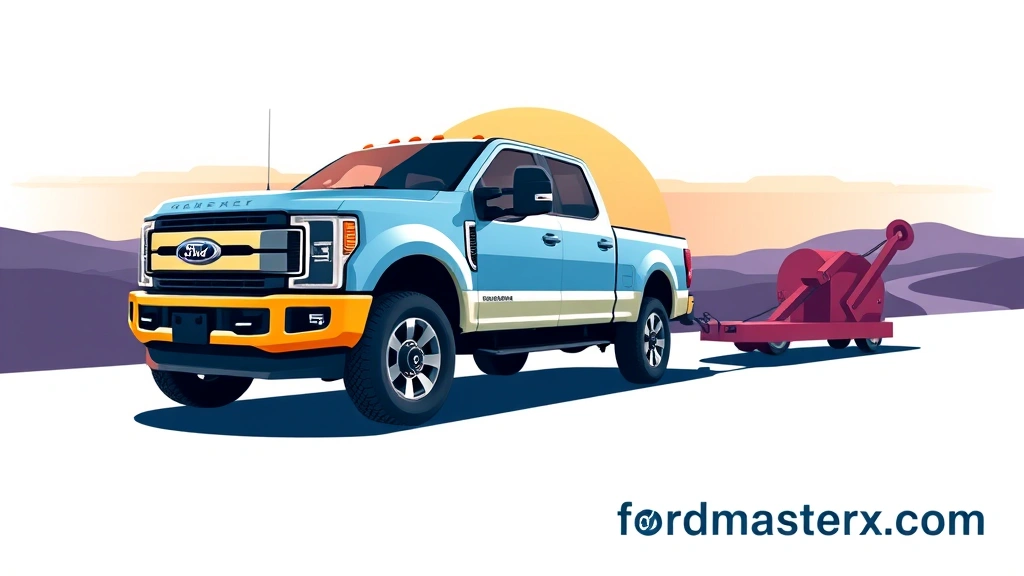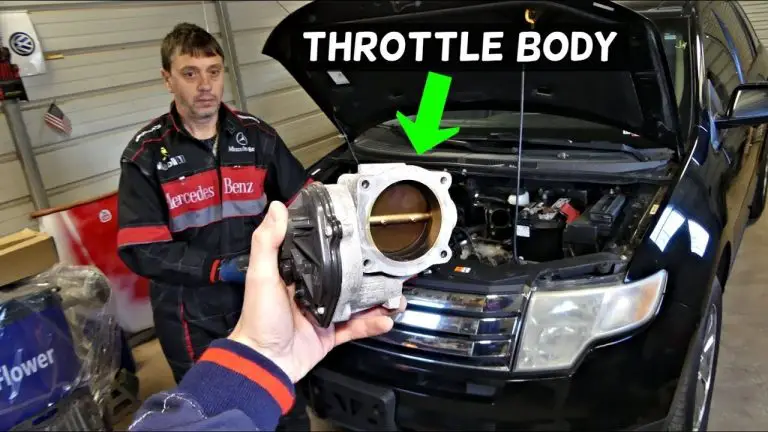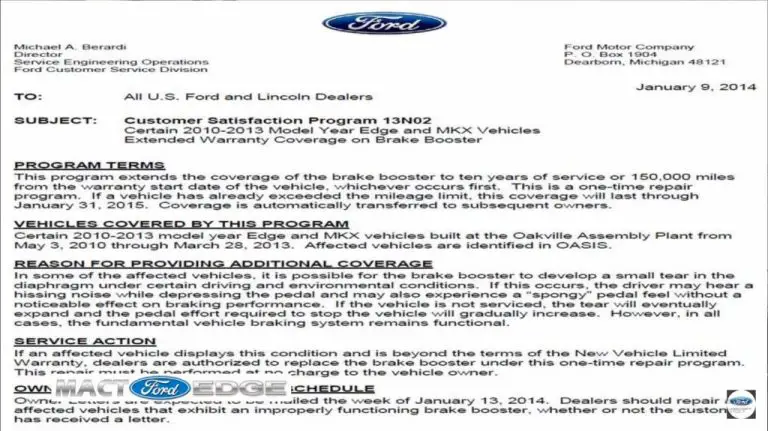F-250 Diesel Towing: Max Capacity & Your Hauling Needs
Key Takeaways
- The Ford F-250 diesel is a towing beast, ready for almost anything you throw at it.
- Towing capacity isn't just one number; it depends on your specific truck's configuration.
- Understanding GCWR, GVWR, and payload is crucial for safe and legal towing.
- Newer models, especially with the High-Output Power Stroke, offer incredible capabilities.
- Always check your truck's door jamb sticker for its exact towing specs.
You're eyeing a Ford F-250 diesel, huh? Smart move. When it comes to hauling serious weight, these trucks are legends on American roads. We're talking about pulling your fifth-wheel camper across state lines, towing heavy equipment to the job site, or even bringing that new boat to the lake. But what exactly can an F-250 diesel tow? Let's dive in and break it down, because it's more than just a single number.
The Heart of the Beast: Ford F-250 Diesel Engine
So, what makes the F-250 diesel such a towing powerhouse? It all boils down to that magnificent engine under the hood. For years, the 6.7L Power Stroke V8 Turbo Diesel has been the go-to choice for heavy-duty hauling, and for good reason. It delivers incredible torque, which is what really gets those heavy loads moving.
Evolution of the Power Stroke
Ford has continuously refined the 6.7L Power Stroke. Each generation has brought more power, more torque, and better efficiency. This constant innovation means that a newer F-250 diesel will generally have higher towing capacities than an older one. You're getting the benefit of decades of engineering excellence.
Standard Output vs. High Output
For the latest models, you might even have a choice between a standard-output and a high-output version of the 6.7L Power Stroke. The high-output variant really cranks up the power, pushing torque figures into truly astounding territory. More torque equals more towing capability, plain and simple.
Understanding Towing Capacity: More Than Just a Number
It's tempting to just look up "F-250 towing capacity" and call it a day. But that's like asking "how fast is a car?" without specifying if it's a sedan or a supercar. Your F-250's exact towing capacity depends on several factors. These include the year, cab style, bed length, drivetrain (2WD or 4WD), axle ratio, and whether it's equipped with a towing package.
Conventional Towing vs. Fifth-Wheel/Gooseneck Towing
You'll often see two different towing capacities listed: conventional and fifth-wheel/gooseneck. Conventional towing uses a hitch receiver on the bumper or frame. Fifth-wheel and gooseneck towing involve a hitch mounted in the truck bed, directly over the rear axle. This setup distributes weight more evenly and provides greater stability, allowing for much higher towing capacities.
Why Fifth-Wheel/Gooseneck is Higher
With a fifth-wheel or gooseneck setup, the weight of the trailer is primarily carried by the truck's frame, not just the hitch receiver. This reduces sway and puts less stress on the rear suspension. It's why those massive RVs and heavy equipment trailers almost always use an in-bed hitch.
F-250 Diesel Towing Capacity by Year (Examples)
Let's look at some examples to give you a ballpark idea. Remember, these are general ranges. Always consult your specific truck's owner's manual or door jamb sticker for precise figures.
Newer Models (e.g., 2023-2024 F-250 Diesel)
For the latest and greatest, the F-250 diesel really shines. With the 6.7L Power Stroke, especially the high-output version, you're looking at some serious muscle.
| Configuration | Conventional Towing (lbs) | Fifth-Wheel/Gooseneck Towing (lbs) |
|---|---|---|
| 2WD, SRW | 22,000 | Up to 23,000 |
| 4WD, SRW | 22,000 | Up to 22,900 |
Note: These are maximums and vary by specific truck configuration, axle ratio, and trim. The high-output engine often unlocks the highest capacities.
Older Models (e.g., 2017-2019 F-250 Diesel)
Even a few years back, the F-250 diesel was a formidable tow rig. While capacities might be slightly lower than the absolute newest models, they're still more than capable for most heavy-duty tasks.
| Configuration | Conventional Towing (lbs) | Fifth-Wheel/Gooseneck Towing (lbs) |
|---|---|---|
| 2WD, SRW | Up to 18,000 | Up to 18,600 |
| 4WD, SRW | Up to 18,000 | Up to 18,600 |
Note: Again, these are general ranges. Always verify with your specific truck's documentation.

Beyond Towing Capacity: Important Weight Ratings
Knowing your truck's maximum towing capacity is just one piece of the puzzle. You also need to understand other crucial weight ratings to tow safely and legally. Ignoring these can lead to dangerous situations, fines, or even voided warranties.
Gross Combined Weight Rating (GCWR)
This is the maximum allowable weight of the fully loaded truck and the fully loaded trailer combined. Think of it as the total weight of everything moving down the road. GCWR is a non-negotiable limit set by Ford. You can't exceed it, period.
How to Calculate Your GCWR
You don't calculate GCWR; it's a fixed number for your specific truck. What you do calculate is the actual weight of your truck and trailer. If that combined weight is over your GCWR, you need to shed some weight or get a bigger truck.
Gross Vehicle Weight Rating (GVWR)
GVWR is the maximum allowable weight of your fully loaded truck itself, including passengers, cargo, and any tongue weight from the trailer. It's how much your truck can weigh when it's ready to roll, before you even hook up a trailer.
Payload Capacity
Often overlooked, payload capacity is critical. This is the maximum amount of weight your truck can carry in its cab and bed. It includes passengers, gear, and the tongue weight (or pin weight for fifth-wheel/gooseneck) of your trailer. Even if your truck can technically pull a certain weight, if the trailer's tongue weight pushes you over your payload, you're overloaded.
Why Payload Matters for Towing
Imagine you have a 1,500 lb tongue weight from your travel trailer. If your truck's payload capacity is 2,000 lbs, that leaves only 500 lbs for you, your family, and all your gear in the truck. It adds up fast!
Optimizing Your F-250 for Towing

Even with a powerhouse like the F-250 diesel, there are things you can do to make your towing experience smoother, safer, and more efficient.
Axle Ratios
Your truck's axle ratio plays a big role in towing. A "higher" numerical ratio (e.g., 3.73 vs. 3.31) generally means more pulling power but slightly worse fuel economy when unloaded. For serious towing, a higher axle ratio is often preferred.
Towing Packages and Features
Ford offers various towing packages that include essential upgrades like a trailer brake controller, heavy-duty alternator, upgraded cooling systems, and specialized wiring. These aren't just luxuries; they're vital for safe and effective towing.
Integrated Trailer Brake Controller
This is a must-have. It allows your truck to communicate directly with your trailer's electric brakes, providing smooth and controlled stopping power. Trying to stop a heavy trailer without one is a recipe for disaster.
Tow/Haul Mode
Most F-250s come with a Tow/Haul mode. When activated, it adjusts transmission shift points, engine braking, and throttle response to optimize performance for towing. Use it! It makes a huge difference, especially on inclines and declines.
Safety First: Towing Tips for Your F-250
Having a capable truck is great, but knowing how to use it safely is paramount.
Check Your Tires
Ensure your truck and trailer tires are properly inflated to the recommended pressures for towing. Under-inflated tires can lead to blowouts and instability.

Load Your Trailer Correctly
Proper trailer loading is crucial for stability. Aim for 10-15% of the total trailer weight on the hitch for conventional trailers (20-25% for fifth-wheel). Too much or too little tongue weight can cause dangerous sway.
Pre-Trip Inspection
Before every tow, do a thorough walk-around. Check lights, brakes, tire pressure, fluid levels, and ensure all connections are secure. A few minutes here can prevent hours of headaches later.
Practice Driving
If you're new to towing, find an empty parking lot and practice turning, backing up, and stopping. It's a different beast than driving just your truck.
What Can an F-250 Diesel Tow? Real-World Examples
So, with all these numbers and ratings, what can you actually pull with your F-250 diesel?
- Large Travel Trailers: Many fifth-wheel RVs fall well within the F-250's capabilities.
- Heavy Construction Equipment: Skid steers, mini excavators, and dump trailers are common loads.
- Multi-Horse Trailers: For the equestrian enthusiasts, a 2-4 horse trailer with living quarters is often manageable.
- Big Boats: Whether it's a large fishing boat or a decent-sized cruiser, the F-250 can handle it.
- Car Haulers: Transporting multiple vehicles or heavy classic cars is no sweat.
It’s all about matching the trailer's weight to your specific truck's capabilities. Don't eyeball it; weigh it!
Frequently Asked Questions
Q1: What is the average towing capacity of a Ford F-250 diesel?
A1: The average conventional towing capacity for a modern Ford F-250 diesel typically ranges from 18,000 to 22,000 pounds. For fifth-wheel or gooseneck towing, it can go up to 23,000 pounds or even more in specific configurations with the high-output engine. However, these are general figures, and your truck's exact capacity depends on its specific build.
Q2: How does the 6.7L Power Stroke diesel engine impact the F-250's towing capacity?
A2: The 6.7L Power Stroke diesel engine is the primary reason for the F-250's impressive towing capacity. Its high torque output, especially in the high-output versions, allows the truck to pull extremely heavy loads with relative ease. Diesel engines are inherently better suited for heavy hauling due to their low-end torque characteristics compared to gasoline engines.
Q3: Can an F-250 diesel tow a large fifth-wheel camper?
A3: Absolutely! Many Ford F-250 diesel trucks are perfectly capable of towing large fifth-wheel campers. The fifth-wheel hitch setup distributes the weight more effectively, allowing the F-250 to utilize its higher in-bed towing capacities. Always check the camper's Gross Vehicle Weight Rating (GVWR) and your truck's specific fifth-wheel towing capacity and payload to ensure a safe match.
Q4: What is the difference between conventional towing and fifth-wheel towing capacity for the F-250?
A4: Conventional towing capacity refers to the maximum weight your F-250 can pull using a hitch receiver mounted to the frame (like a bumper pull trailer). Fifth-wheel towing capacity, on the other hand, is the maximum weight it can pull with a hitch mounted in the truck bed, directly over the rear axle. Fifth-wheel capacities are almost always higher due to better weight distribution and stability.
Q5: Where can I find the exact towing capacity for my specific Ford F-250 diesel?
A5: The most accurate place to find your specific Ford F-250 diesel's towing capacity and other weight ratings (like GVWR, GCWR, and payload) is on the sticker inside your driver's side door jamb. This sticker provides information unique to your truck's configuration. You can also consult your owner's manual for detailed towing charts.
Conclusion
The Ford F-250 diesel is undeniably a top contender when it comes to heavy-duty towing. Its robust Power Stroke engine, coupled with advanced towing technologies, makes it a reliable partner for hauling everything from large RVs to construction equipment. But remember, knowing your truck's specific limits and understanding all the weight ratings is just as important as the truck's raw power.
So, are you ready to hit the road with confidence? What will you be towing with your F-250 diesel? Share your towing adventures and questions in the comments below!








